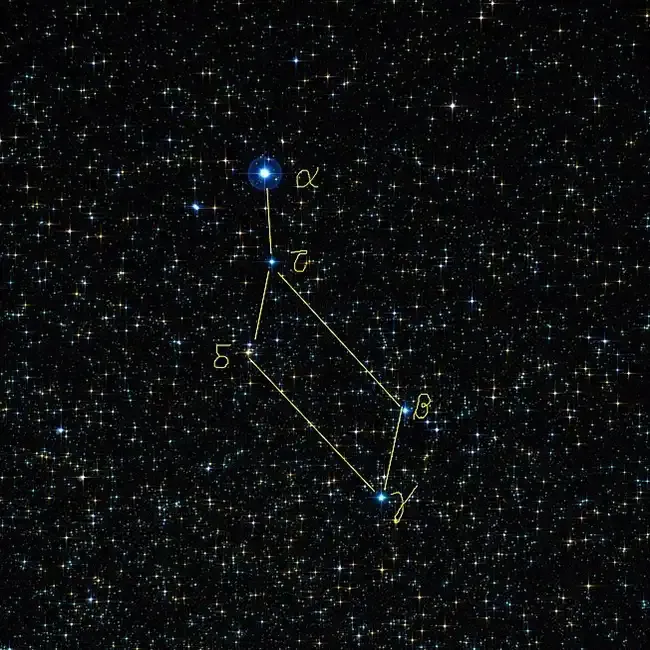
Lyra is a small but prominent constellation in the northern sky, named after the lyre, a stringed musical instrument. It is best known for containing the bright star Vega, one of the most luminous stars visible from Earth. Despite its modest size, Lyra holds a significant place in both astronomical and mythological traditions.
Key Features
Lyra is a relatively small constellation, occupying an area of about 286 square degrees. However, it is easily identifiable thanks to Vega, the fifth-brightest star in the night sky. The constellation's shape is often depicted as a small parallelogram, with Vega at one corner.
Lyra is also home to the famous Ring Nebula (M57), a planetary nebula located between the stars Beta and Gamma Lyrae. The constellation contains several notable double stars, including Epsilon Lyrae, known as the "Double Double" due to its two pairs of binary stars.
Mythology
In Greek mythology, Lyra is associated with the story of Orpheus, a legendary musician and poet. Orpheus was said to play the lyre so beautifully that it could charm even the stones and trees. After his death, it was believed that the gods placed his lyre in the sky as a constellation. The lyre was also associated with Hermes, who invented the instrument and gave it to Apollo.
Notable Stars
- Vega (Alpha Lyrae): Vega is the most prominent star in Lyra and the fifth-brightest star in the sky. It is part of the Summer Triangle asterism, along with Altair in Aquila and Deneb in Cygnus. Vega is a white main-sequence star, located about 25 light-years from Earth.
- Sheliak (Beta Lyrae): Sheliak is a binary star system, known for its variability. The system consists of two closely orbiting stars, causing the brightness of Sheliak to vary over time.
- Sulafat (Gamma Lyrae): Sulafat is a giant star that forms one corner of the Lyra parallelogram. It is a blue giant, much larger and more luminous than our Sun.
- Epsilon Lyrae: Known as the "Double Double," Epsilon Lyrae is a famous double star system where each of the two visible stars is itself a binary pair, making it a quadruple star system.
Visibility
Lyra is visible from most parts of the world, although it is best seen in the northern hemisphere. It is prominent in the summer and autumn months, particularly around July when it is nearly overhead at midnight in mid-northern latitudes. In the southern hemisphere, Lyra is visible in the winter months but appears lower in the sky.
Tips for Observing
- Identifying Vega: Start by locating Vega, which is easy to find due to its brightness. Once you've found Vega, you can identify the rest of the constellation by looking for the small parallelogram of stars nearby.
- Observing the Ring Nebula: If you have a telescope, look for the Ring Nebula (M57), which is located between Beta and Gamma Lyrae. This planetary nebula appears as a small, faint ring, and can be a rewarding target for amateur astronomers.
- Epsilon Lyrae: With binoculars or a small telescope, you can observe Epsilon Lyrae, the Double Double. Resolving both pairs of stars can be a fun challenge and is a popular test of your telescope's resolution.
